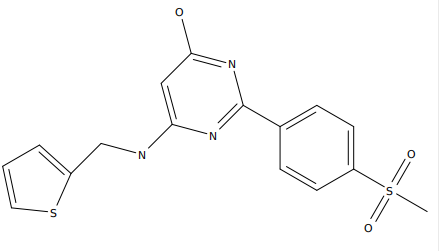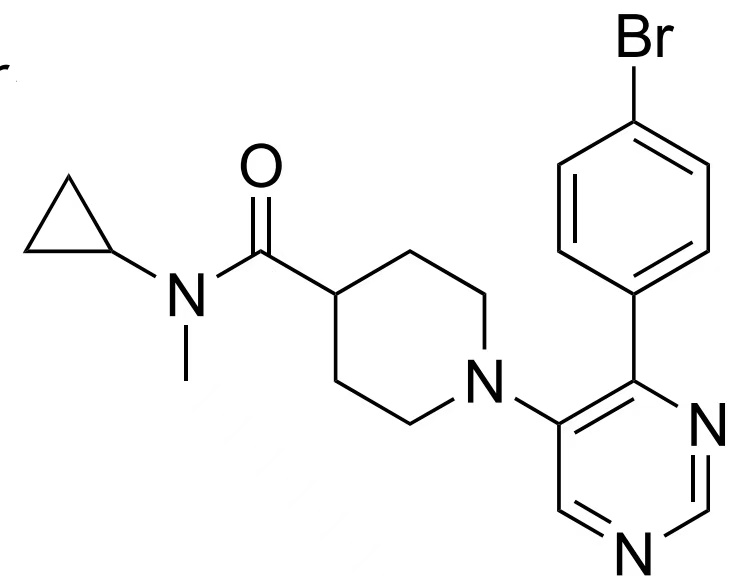 To enhance service speed and avoid tariff delays, we've opened a US warehouse. All US orders ship directly from our US facility.
To enhance service speed and avoid tariff delays, we've opened a US warehouse. All US orders ship directly from our US facility.
| Cat. No. | Product Name | Field of Application | Chemical Structure |
|---|---|---|---|
| DC33611 | PSMA-617 Linker Featured |
Vipivotide tetraxetan Ligand-Linker Conjugate (PSMA-617 Ligand-Linker Conjugate) is widely used in the treatment of metastatic castration-resistant prostate cancer (mCRPC) due to its ability to deliver targeted radiation directly to PSMA-expressing cancer cells, minimizing damage to surrounding healthy tissues.
More description
|

|
| DC12162 | PSMA-617 Featured |
PSMA-617 is a high potent prostate-specific membrane antigen (PSMA) inhibitor, with a Ki of 0.37 nM.
More description
|

|
| DC65336 | PSMA-1007 Featured |
PSMA-1007 is a novel Glu-Ureido-based prostate-specific membrane antigen (PSMA) inhibitor designed for use in positron emission tomography (PET) imaging of prostate cancer. It belongs to the class of small-molecule PSMA inhibitors that specifically target PSMA, a transmembrane protein highly expressed in prostate cancer cells and the neovasculature of other solid tumors. PSMA-1007 is particularly notable for its favorable pharmacokinetic properties, including high tumor uptake and low urinary excretion, making it an excellent tool for prostate cancer diagnosis and staging.
More description
|
.gif)
|
| DC23004 | PSMA-ligand-1 Featured |
PSMA ligand-tubulysin compounds represent a cutting-edge approach to targeted cancer therapy, combining the precision of PSMA targeting with the potent cytotoxicity of tubulysin. This strategy holds significant promise for improving outcomes in prostate cancer and other PSMA-expressing malignancies, offering a highly specific and effective treatment option with reduced systemic toxicity. As research progresses, these compounds could play a transformative role in the field of oncology.
More description
|

|
| DC66465 | Pentanedioate Featured |
Pentanedioate is a valuable starting material for the synthesis of PSMA inhibitors due to its flexible structure and functional groups that mimic natural PSMA ligands. By leveraging its chemical properties, researchers can develop potent and selective PSMA-targeting agents for diagnostic imaging, targeted therapy, and theranostic applications in prostate cancer and other PSMA-expressing malignancies. Its role in drug discovery highlights the importance of simple organic molecules in the development of advanced cancer therapies.
More description
|

|
| DC71440 | FAP-2286 Featured |
FAP-2286 is a highly promising FAP-targeting theranostic agent with potent affinity for FAP, versatile radionuclide coupling capabilities, and demonstrated antitumor activity. Its ability to serve as both a diagnostic imaging agent and a therapeutic tool makes it a valuable asset in oncology, particularly for cancers with prominent stromal involvement. As research progresses, FAP-2286 has the potential to significantly advance cancer diagnosis, treatment, and research, offering new hope for patients with FAP-expressing tumors.
More description
|

|
| DC66464 | 3BP-3940 Featured |
3BP-3940 is a highly potent FAP-targeting peptide with significant potential in theranostics. Its ability to be coupled with diagnostic and therapeutic radionuclides makes it a versatile tool for tumor imaging, targeted therapy, and treatment monitoring. By focusing on the tumor stroma, 3BP-3940 offers a promising approach to improving cancer diagnosis and treatment, particularly for cancers with prominent stromal involvement. As research progresses, 3BP-3940 could play a key role in advancing precision oncology.
More description
|

|
| DC66114 | FAPI-46 Featured |
FAPI-46 is a highly promising FAP-targeted radiotracer with superior tumor uptake and prolonged accumulation, making it an excellent tool for imaging a wide range of cancers. Its versatility, combined with its potential for theragnostic applications, positions FAPI-46 as a valuable asset in the field of oncology, enabling improved diagnosis, staging, and treatment monitoring for patients with FAP-expressing tumors.
More description
|

|
| DC66460 | FAPI-4 Featured |
FAPI-4 is a potent FAP inhibitor with significant applications in cancer research and diagnostics. Its radiolabeled form, ⁶⁸Ga-FAPI-4, is a promising PET/CT imaging agent for visualizing FAP-expressing tumors with excellent tumor-to-background contrast. This makes it a valuable tool for cancer diagnosis, staging, treatment monitoring, and therapeutic development, particularly in cancers with a prominent stromal component.
More description
|

|
| DC66459 | NOTA-FAPI Featured |
NOTA-FAPI is a FAP-targeted imaging probe with excellent tumor detection efficacy and imaging quality. Its high specificity for FAP, stable radiolabeling, and ability to visualize the tumor stroma make it a promising tool for tumor diagnosis, staging, and treatment monitoring. NOTA-FAPI has significant potential for advancing cancer imaging and therapy, particularly in cancers with a prominent stromal component.
More description
|

|
| DC65340 | UAMC1110-NH2 Featured |
UAMC1110-NH2 is a derivative of UAMC1110 (SP-13786) with an aminobutoxy group, making it a useful intermediate for synthesizing UAMC1110 conjugates. UAMC1110 is a potent and selective FAP inhibitor with low nanomolar potency and high specificity over related proteases. Together, UAMC1110-NH2 and UAMC1110 have significant potential for advancing FAP-targeted therapies, imaging agents, and research tools, particularly in cancer and fibrotic diseases.
More description
|

|
| DC66458 | FAPI -14 Featured |

|
|
| DC65710 | PS13 Featured |
PS13 is a highly potent and selective COX-1 inhibitor, and its radiolabeled form, [¹¹C]PS13, is a promising PET radiotracer for imaging COX-1 expression in vivo. Its ability to selectively bind COX-1 in major organs, including the spleen, gastrointestinal tract, kidneys, and brain, makes it a valuable tool for studying COX-1-mediated processes in health and disease. This radiotracer has significant potential for advancing research and therapeutic development in COX-1-related conditions.
More description
|

|
| DC65839 | MC1 Precursor Featured |
Precursor of MC1, is a vital component in the synthesis of MC1, a selective and potent COX-2 inhibitor. Radiolabeled MC1, [¹¹C]MC1, serves as a promising PET radioligand for imaging COX-2 expression in vivo. Its high selectivity, combined with its ability to non-invasively visualize COX-2 in disease states, makes it a valuable tool for research and clinical applications, particularly in neuroinflammation, cancer, and drug development.
More description
|

|
| DC65841 | MC1 Featured |
MC1 is a selective and potent COX-2 inhibitor, and its radiolabeled form, [¹¹C]MC1, is a promising PET radiotracer for detecting COX-2 expression in vivo. Its ability to visualize COX-2 in neuroinflammation and other disease states makes it a valuable tool for research and therapeutic development, particularly in understanding and targeting COX-2-mediated processes in the brain.
More description
|

|
| DC60607 | SL-25.1188 Featured |
SL-25.1188 is a reversible MAO-B inhibitor with high brain uptake and slow plasma metabolism, making it a promising candidate for treating Alzheimer's dementia and aiding in smoking cessation. Its ability to modulate neurotransmitter levels in the brain positions it as a valuable therapeutic tool for addressing these challenging conditions.
More description
|

|
| DC60608 | SL25.1188 precursor Featured |
SL25.1188 Precursor is a key intermediate in the synthesis of SL25.1188, a reversible and selective MAO-B radioligand. The radiolabeled form, [¹¹C]SL25.1188, is a promising PET imaging agent for studying MAO-B in the brain, with applications in neurodegenerative disease research and drug development. Its reversible binding and high selectivity make it a valuable tool for understanding MAO-B's role in health and disease.
More description
|

|
| DC65709 | PS-13 precursor 19 Featured |
PS-13 Precursor 19 is a critical intermediate in the synthesis of PS-13, a highly potent and selective COX-1 inhibitor. PS-13's exceptional selectivity for COX-1 over COX-2 makes it a promising compound for both therapeutic development and research applications focused on understanding COX-1-mediated processes.
More description
|

|
| DC60791 | Cholestify Precursor Featured |
Precursor of Cholestify,18F-Cholestify, which binds cytochrome P450 46A1, detected cholesterol breakdown in the mammalian brain. CYP46A1 converts cholesterol to 24-hydroxycholesterol, a form easily eliminated from the brain.
More description
|

|